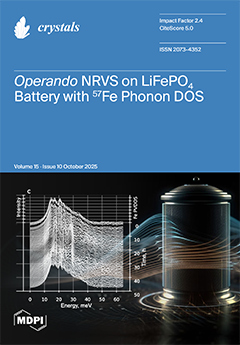In this article, a Nd
2Fe
14B
p/2024Al composite was prepared using high-energy ball milling, magnetic field cold isostatic pressing, and microwave sintering. The influence of powder particle size on microstructure and mechanical properties was discussed. The experimental results demonstrated
[...] Read more.
In this article, a Nd
2Fe
14B
p/2024Al composite was prepared using high-energy ball milling, magnetic field cold isostatic pressing, and microwave sintering. The influence of powder particle size on microstructure and mechanical properties was discussed. The experimental results demonstrated that a ball milling duration of 10 h yielded powders with an average particle size of 5 μm, resulting in a refined and homogeneous microstructure, with a hardness value of 115 HV. Additionally, the densification process of the microwave-sintered sample was analyzed. When the sintering temperature was 490 °C, in-depth analysis was conducted on the effect of Nd
2Fe
14B addition on the microstructure and properties of the composite. The results showed that when the addition of Nd
2Fe
14B was 15 wt.%, the microstructure of the composite was uniform with fewer pores, and the Nd
2Fe
14B phase was evenly distributed on the matrix. At the same time, the compactness, microhardness, yield strength, and compressive strength of the composite also reached their optimal values, which were 94.3%, 136 HV, 190.5 MPa, and 248.9 MPa, respectively. When the addition of Nd
2Fe
14B reached 20 wt.%, the magnetic properties of the composite were slightly better than those of 15 wt.% Nd
2Fe
14B addition. However, based on the goal of preparing a high-magnetic and high-performance aluminum-based composite, considering the microstructure, mechanical properties, and magnetic properties comprehensively, it is believed that 15 wt.% is the optimal addition amount of Nd
2Fe
14B.
Full article





